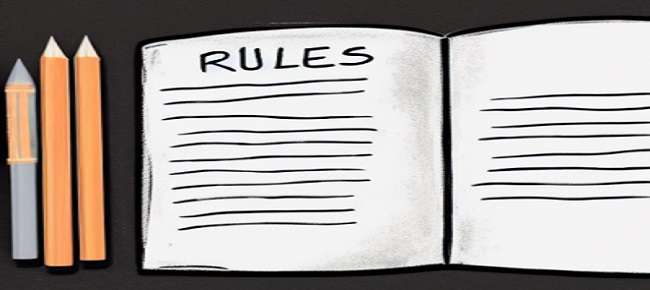A Precious Metals (Gold) Individual Retirement Account is also called and classified as a self-directed Individual Retirement Account. A self-directed IRA is an IRS-approved retirement account that gives investors the ability to invest in a wider range of assets than traditional IRAs.
Some of the most popular alternative investments include real estate, private equity, and cryptocurrency. Self-directed IRAs also offer tax advantages, such as tax-deferred growth on investment gains. One of the biggest benefits of a self-directed IRA is the ability to invest in high-growth asset classes that may not be available through traditional retirement accounts.
For example, self-directed investors can access alternative investments such as real estate and private equity, which have the potential to generate higher returns than traditional stocks and bonds. However, self-directed IRAs can also come with a higher level of risk and volatility than traditional investments.
Gold Individual Retirement Accounts, or Gold IRAs, are a great way to invest in gold. However, there are some tax rules that you need to be aware of before you set up your account. In this blog post, we will discuss the most important gold IRA tax rules so that you can make the best decision for your retirement savings!
What Is a Gold IRA and How Does It Work?
A Gold IRA is a retirement account that allows you to invest in gold and other physical precious metals. Technically speaking this should be referred to as a “precious metals ira” because you can hold silver, gold, platinum and palladium. Gold IRAs work like traditional IRAs, but the assets in the account are physical gold bars or coins, instead of gold mining stocks or mutual funds. While most IRAs are invested in paper assets, a Gold IRA allows you to diversify your portfolio with a hard asset that has demonstrated enduring value over time.
As with traditional IRA’s your holdings in the IRA are purchased with pre-tax dollars. The alternative to this traditional IRA is a ROTH IRA which is funded with money on which you have already paid taxes.
Many people choose to invest in gold because it is a safe haven asset, which means that it tends to hold its value even when other asset classes are experiencing volatility. Gold is also portable and liquid, making it easy to sell if you need cash in a hurry.
In order to open a Gold IRA, you must first set up a self-directed IRA with a custodian that offers this type of account. Once your account is established, you can then begin investing in gold and other precious metals. There is no limit to how much gold you can hold in your account, and you can take physical possession of your gold at any time. Gold IRAs offer a great way to diversify your retirement portfolio and protect your assets from market fluctuations.
What Are the Tax Rules for Gold IRAs?
Gold IRAs are one of the most popular types of retirement accounts in the United States. Unlike traditional IRAs, which invest in stocks and bonds, Gold IRAs allow investors to hold physical gold as part of their retirement portfolio. While there are many benefits to investing in gold, there are also some important tax rules that investors need to be aware of.
Self-directed IRA’s are just another way to invest in your retirement future. You have more control over investments and can use them for things like real estate, gold coins or even cryptocurrency! These types of IRAs are not offered by the large brokerage companies or banks because these financial institutions do not offer alternative investment choices such as private equity, precious metals or cryptocurrency. Brokerage companies make money from selling investments, such as stocks, bonds, or mutual funds. They also make money from managing these assets. This business model is not set up to work with alternative assets, such as real estate, gold coins, private equity and cryptocurrency.
Under current tax law, investors are allowed to contribute up to $5,500 per year to a Gold IRA. This contribution limit is the same as for traditional and Roth IRAs. However, unlike traditional IRAs, there is no catch-up provision for investors over the age of 50.
The IRS rules which govern gold Individual Retirement accounts are extremely detailed. What this means is that your physical bullion purchases need to conform to industry standards and regulations regarding to the size, weight, design and metal purity of the precious metal. According to the IRS, you can’t take a distribution from your gold IRA until you turn 59 ½. At that time, you’ll have to pay any income taxes due on any withdrawals, and you can liquidate the metals in your account for cash or take physical possession of them without penalty.
The Internal Revenue Service has offered several Private Letter Rulings on Gold IRA’s which I have listed below. What is important about the tax code is that:
“IRA assets must be held by a financial institution or an IRS-qualified custodian.”
Private Letter Ruling 200732026 – In 2007, the IRS ruled that gold ETFs were not collectibles for IRA investment purposes (Letter Ruling 200732026). The one restriction that remains is that the IRA owner cannot have physical possession of the gold.
Private Letter Ruling 2007322027 – Individual Retirement accounts can purchase shares in a SILVER ETF.
Private Letter Ruling 201446030 – Individual Retirement Accounts can invest in trusts that own gold.
These rules and regulations listed above are quite technical. Our suggestion is to have your designated gold ira custodian answer any and all questions for you about your personal situation. Your Gold Custodian is an expert in all things related to these rules and regulations and their main function and purpose is to ensure that everything in your account is in compliance with these rules.
Your gold IRA custodian is responsible for IRS compliance and maintenance for gold IRA accounts. They are also responsible for answering any questions related to the gold IRA account for you. This service is invaluable because they have the resources and expertise to dig into the fine details of the IRS code and provide granular answers if they are required. The custodian is responsible for making sure the gold meets all requirements.
When it comes time to take distributions from a Gold IRA, the tax rules are different than for Roth gold IRAs and traditional IRAs. Distributions from a Gold IRA pay taxes as ordinary income at the investor’s marginal tax rate. Additionally, early withdrawals from a Gold IRA may be subject to a 10% penalty. Therefore, it’s important to consult with a tax advisor before taking any distributions from a Gold IRA.
Despite the different tax treatments, Gold IRAs can still be an excellent way to diversify your retirement portfolio and protect your assets from inflation. For more information about opening a Gold IRA, please comment below.
Other Benefits to Investing in a Gold IRA Besides the Tax Breaks
For many years, gold has been used as a form of currency and as a way to store wealth. Gold is considered to be a stable investment, and it typically holds its value even when other gold investments are declining. As a result, gold has become an increasingly popular choice for retirement plans, such as IRAs. In addition to the potential tax benefits, there are several other reasons to invest in a gold IRA.
First, gold can help to diversify your portfolio. By investing in gold, you can reduce your exposure to other asset classes, such as stocks and bonds. This diversification can help to protect your portfolio from market volatility and downside risk.
Second, gold has historically outperformed other asset classes over the long term. While there will be periods of time when gold prices decline, over the long run, gold has outperformed stocks, bonds, and other investments.
Finally, gold is a tangible asset that you can hold in your hand. This can provide peace of mind for investors who are worried about the potential for stock prices to crash or for bond prices to decline. For these reasons, gold can be an attractive addition to any retirement portfolio.
How Can You Get Started with A Gold IRA?
Gold IRA tax rules are different than those for other types of retirement accounts, so it is important to understand how they work before making any investment decisions. A gold IRA allows you to invest in gold, silver, or other precious metals, and there are a few ways to get started.
First, you can roll over funds from an existing retirement account such as a 401(k) or IRA. Or you can open a new account and contribute funds on a regular basis. There are also a few gold IRA companies that will allow you to set up a gold-backed IRA with little or no money down.
No matter which approaches you take, gold IRA tax rules require that the gold be stored in an approved depository and that withdrawals be made only for eligible expenses. With careful planning and research, investing in a gold IRA can be a great way to diversify your retirement portfolio and protect your nest egg from inflation.
The best gold IRA rollover companies have relationships with most reputable custodians, so if you are looking for the right custodian, click the button below, select the Gold IRA company that is the best fit for your needs, and they will take care of the rest.
Some Of the Risks Associated with Investing in a Gold IRA
Most people are aware that they can invest in a traditional IRA or a Roth IRA in order to save for retirement. However, not as many people are familiar with the concept of a GOLD IRA. A GOLD IRA is simply an IRA that is funded with gold, rather than cash. While there are some similarities between a GOLD IRA and other types of IRAs, there are also some important differences that you should be aware of before making any decisions.
For starters, it’s important to note that the IRS has specific rules pertaining to GOLD IRAs. Your custodian will inform you of any penalties which could arise if you make an early withdrawal from your account. Incidentally these penalties are very similar for traditional IRA’s as well.
Additionally, there are requirements in place regarding how your gold holdings must be stored. As such, it’s important to do your research and make sure that you understand all of the IRS rules before investing in a GOLD IRA.
Despite the fact that there are some additional requirements involved, investing in a GOLD IRA can still be a wise decision. Gold is a valuable asset that can help to diversify your portfolio and protect your savings from inflation. Additionally, gold typically holds its value well during periods of economic turmoil. For these reasons, investing at least some of your retirement savings in gold may help you to achieve your long-term financial goals.
When it comes to investing in precious metals IRA’s, it’s important to take a long-term perspective. Precious metals can be volatile in the short-term, but over the long term they have proven to be a reliable store of value. This is especially true when you consider the purchasing power of precious metals. Over time, precious metals tend to hold their value better than other assets, such as stocks and bonds. As a result, a long-term investment horizon is essential when investing in precious metals IRA’s. By taking a long-term view, you can weather the volatility and ensure that your investment retains its value over time.
Another factor to consider is that gold IRA tax rules are slightly different from traditional IRA rules, so it’s important to understand the potential tax implications before making any decisions. However, there are also ways to minimize these risks, such as investing in gold ETFs instead of gold coins or bars. Your gold custodian will walk you through all of these finer details.
By understanding the risks involved and taking steps to mitigate them, you can help ensure that investing in a Gold IRA is a smart decision for you.





